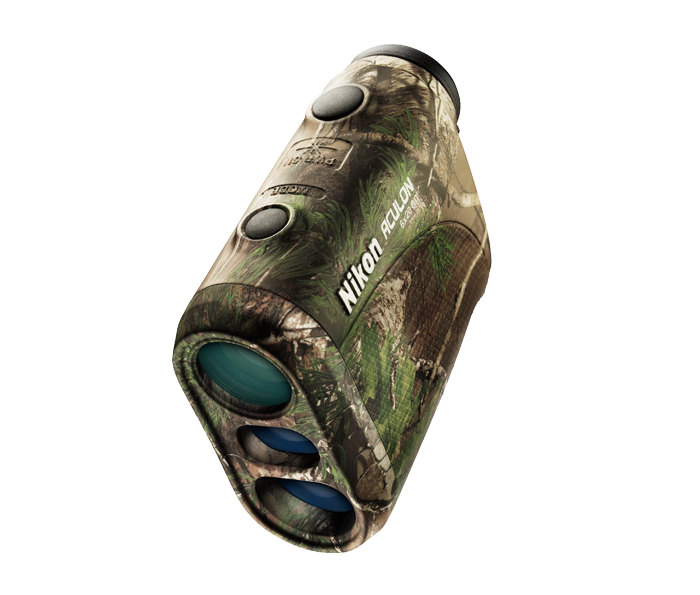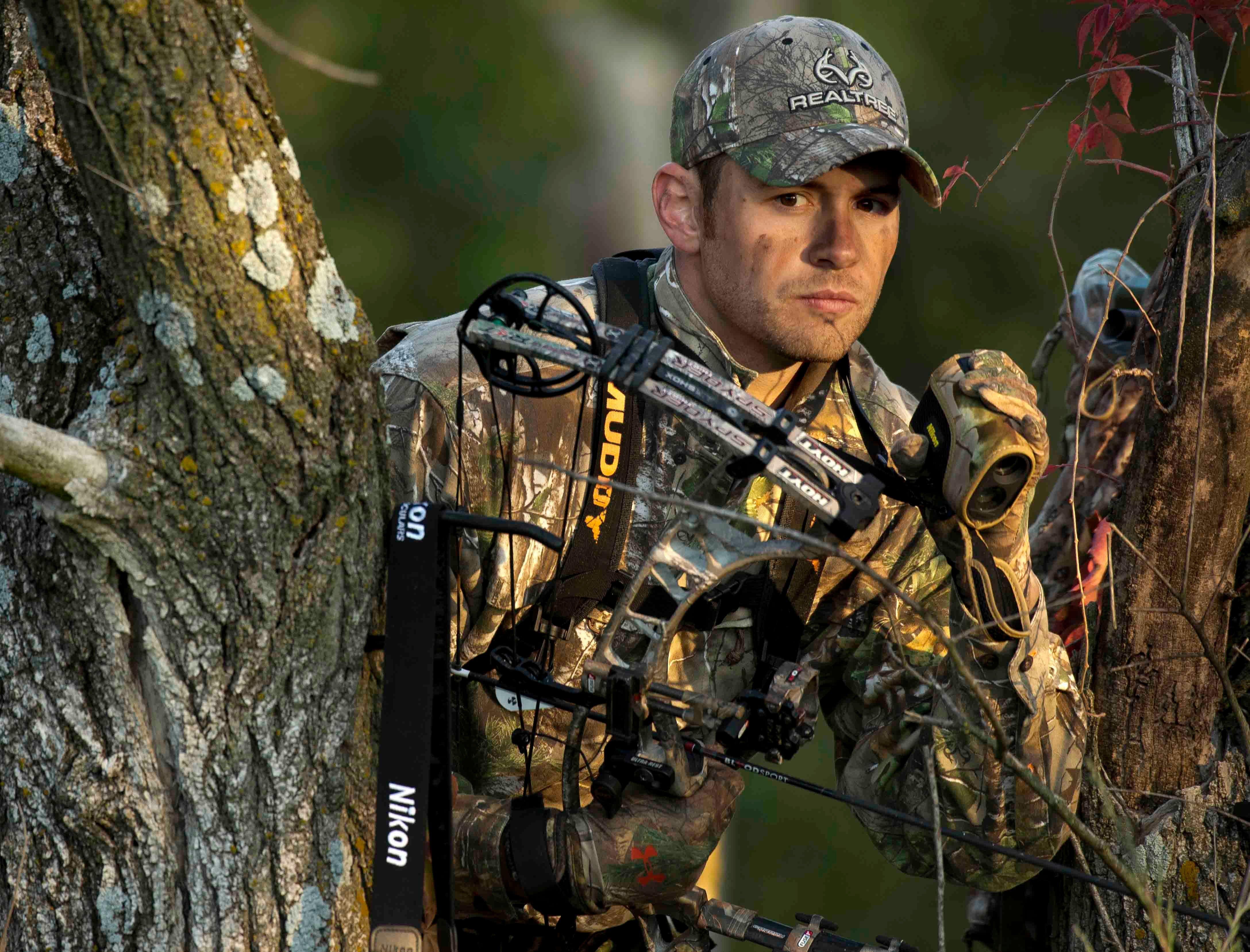Get the Most Out of Your Laser Rangefinder
Judging range has always been a big part of archery. Arrows, even from the fastest compound bows, travel in arching paths. Misjudged range has probably caused more misses than all other factors.
Then came affordable laser rangefinders, which are now standard-issue gear for modern bowhunters. And misses disappeared.
Yeah, right. In a world of ideal conditions, a laser rangefinder is infallible. Trouble is, few bowhunting scenarios are perfect. Bowhunting without a laser rangefinder will handicap you, but probably no more so than bowhunting with a laser rangefinder that you don't understand how to use. Here are eight skills you need to know.
1. Master the Modes
After purchasing a new laser rangefinder, take a little time to get to know it. Read the instructions (heresy!), play with it until you understand its functions by isolating modes designed specifically for rifle or bowhunting use; rain or fog modes, and especially scan mode if it's equipped with that feature.
Scan mode gives you a running measure of moving targets, but it can also be used to get a viable reading through patchy vegetation by panning back and forth until a beam breaks through. This essentially gives you a dozen different pops at a single target in less time than it would take to make a single laser pop without scan mode. To get a better feel for your rangefinder and to make ranging faster while bowhunting, practice using it as diligently as you would your bow. Take it along on walks, while stump-shooting or small-game hunting. Using your rangefinder should become automatic.
 2. Carry It Properly
2. Carry It Properly
A huge aspect of making a rangefinder an effective hunting tool centers on carrying it properly. It needs to remain protected when not in use, but also handy when needed and easily stashed when you're ready to shoot. Factory-provided cases are often ill-suited to bowhunting. They're noisy and too snug, making it difficult to slide the unit back in quickly when rushed or nervous. Several companies sell more specialized products for carrying your rangefinder afield. Taping a compact, single-hand unit directly atop your binoculars is a pretty good temporary solution. Pick a mode of carry that works for you. If you have the money, several optic companies offer binoculars with integrated rangefinders built in. The Leica Geovid HD, Zeiss Victory RF, Swarovski EL Range and Bushnell Fusion are all examples.
3. Understand the Shortcomings
Laser rangefinders operate by time-of-flight technology. They send out a laser beam and capture its returning reflection while a microprocessor measures the turnaround time and converts it to yardage. Any interruption of the laser's path shortstops the process, meaning it doesn't operate well in thick cover or through scattered clutter. The first thing encountered by that beam, be it a blade of grass or a small leaf 5 yards in front of the animal, is the range you'll receive. This is a worst-case scenario because that discrepancy might go unnoticed and cause a miss or low wound. Yet, game animals have an annoying habit of standing behind grass stems and shrub branches. Many bowhunters have trouble using rangefinders because they try to get absolute measurement taken directly from animal hide.
4. Range Clear Landmarks
To combat the problem above, more lateral thinking is often in order. For instance, attempt to anticipate where an animal will move next and pop a range from a landmark before the animal arrives. Areas with high, straight-trunked trees make receiving accurate range easy, even when the ground is cluttered with laser-deflecting vegetation.
With experience you'll quit thinking about the animal itself as a laser target, and instead look for reliable ranging surfaces in the same vicinity. When all else fails, take what information you can get and work with it the best you can. Range what you can and add or subtract guesstimated range from that object, for instance.
Tell yourself, "I know that tree is 44 yards away, and he's going to be about 10 yards this side of it when he chases that doe through." This narrows the margin for error presented by guessing the entire range.
5. Address the Angles
There's a big difference between straight-line and vertical-compensated range. This is of most concern to bowhunters shooting from elevated stands or in steep terrain. On steep downhill shots, aiming for a straight-line range provided by a laser rangefinder will result in a high hit. This is all a matter of geometry and actual distance changes with angles and height. The industry has addressed the issue with accurate tilt-compensated rangefinder models, but not all models are so equipped.
When using a standard unit while in a stand or on a hill crest, forget the ground the target stands on and instead range tree trunks at eye level. You've just received an accurate range for anything situated at the base of that tree.
 6. Use Your Rangefinder to Negotiate Obstacles
6. Use Your Rangefinder to Negotiate Obstacles
It's the rare shot at game that doesn't involve leaning, kneeling or stooping to clear something big or small standing between you and success. The smallest twig can ruin an entire season. The laser rangefinder is an important tool to help you work around these inevitable dilemmas.
For example, let's say I have an elk standing at 42 yards (laser-ranged). There are overhanging branches between the elk and me, and a second reading reveals they're 27 yards away. I stash the rangefinder, hold my bow at arm's length and center my 40-yard pin on the elk's vital zone. Then I note where my 30-yard pin sits in relation to the branches. They're buried in the branches, so I know deflection is likely. I take a long, silent step backward, increasing the spread between my feet and lowering my line of sight. Referencing the 30-yard pin again I see daylight. It's time to shoot!
What takes minutes to explain occurs in seconds in reality, but this kind of efficiency comes only through practice. Keep this in mind: Consult a rangefinder not only for the distance to your quarry but also to learn whether obstacles anywhere between you and the target will permit your arrow to pass cleanly, or if you need to duck, kneel or pass on the shot altogether.
7. Keep Old-Fashioned Yardage-Judging Skills Sharp
Unless you're a compulsive 3-D tournament shooter, your eyeball-judging skills have likely gotten soft, meaning a bad laser reading isn't easily recognized. I've found myself stunned on several occasions to discover that because I now rely so completely on laser rangefinders, I've killed my unaided range-judging skills.
I've allowed many animals to walk because I squandered a split-second window of opportunity by ranging when I should've been shooting.
There are those moments of mental juggling when you vacillate between wanting to know the range absolutely or shooting because you're fairly sure a best guess is good enough. I've come out the winner of several showdowns with season-making trophies only because I reached for my bow first, rather than my rangefinder. Simply put, do not abandon traditional range-judging skills to lean entirely on technology. If you do, you'll sacrifice an edge in real-world bowhunting scenarios.
8. Trust Your Gut
The savvy bowhunter trusts his gut when it comes to an obvious misreading provided by even a high-tech rangefinder. This is a matter of gaining enough confidence to question a reading that obviously doesn't make sense for one of the reasons listed above. Sometimes the yardage a rangefinder provides just doesn't correlate to what your mind is convinced is true, at least in ball-park terms. Check again, referencing a different aiming spot, if your senses tell you something is wrong with the reading.
Like the treestand, compound bow and trail camera, the laser rangefinder has forever changed the face of bowhunting. We're no longer victims to guesstimates and patchy range-judging skills. It has resulted in entire seasons without missing a single animal - something I could never have claimed before laser technology. But like all of those other tools, a rangefinder is at its best in the hands of a bowhunter who has truly mastered all its features.
Editor's Note: This was originally published on July 22, 2016.
Are you a bowhunter wanting to learn how to accomplish your goals? Check out our stories, videos and hard-hitting how-to's on bowhunting.








